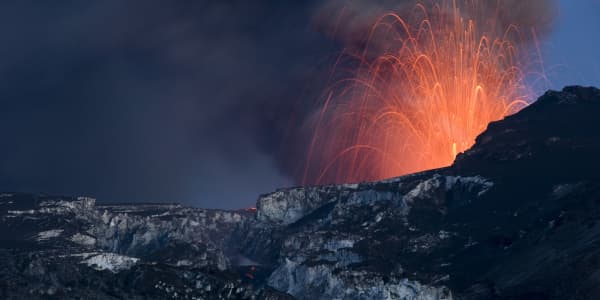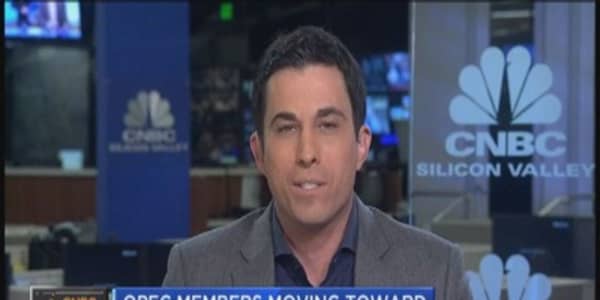In 25 years it won't be just doomsday preppers living off the grid.
As the technology behind renewable energy evolves—and improves—more consumers will opt to cut ties with utility companies and become their own power source.
Much like how people abandoned land lines for mobile devices, consumers will likely begin to adopt new ways of powering their homes instead of being completely reliant on utility companies, said James Wrathall, an attorney in the the energy finance group at Sullivan & Worcester.
"I think consumers are gaining power in the equation and they are seeing these availabilities of this technology and they are seeing the benefit economically and they are going to demand it and they are going to get it," Wrathall said.
"In the end, greater power of control is going to flow towards consumers, the question then becomes what happens to the utilities?" he said.
The rise of distributed generation
As the cost increases for electricity coming from large, centralized power plants, developments in "distributed' on-site energy resources are pushing costs down and changing the economics, Wrathall said.
Distributed generation systems make their power at the point of consumption, and usually include using multiple energy sources such as solar, wind and geothermal. Creating the energy on-site cuts costs and inefficiencies related to transmission and distribution.
While potentially great for consumers, this change could spell trouble for electric utilities, according to a report by the research firm Morningstar published earlier this year.
"Distributed generation (DG) could be the end of utilities as we know them today," Morningstar said in the report. "Utilities' centralized network monopolies break down when customers become self-sufficient competitors."
Read More A dirty clean energy battle becoming a utility war
Another feature of the emerging energy landscape are microgrids, which are essentially small-scale, localized electricity systems, said Michael Dale, an assistant professor in environmental engineering and earth sciences at Clemson University.
With distributed generation, along with better energy management, efficiency and storage, microgrids will become much more viable, Wrathall said.
Battery revolution
While improvements in distributed generation will make it easier for people to leverage microgrids in the near-term, advancements in solar and battery technologies will help drive the power shift even further, said Jamais Cascio, a futurist and senior fellow at the Institute for Ethics and Emerging Technologies.
"The improvement of batteries will be fundamental to a revolution that will make any kind of living off the grid not just possible, but easy," Cascio said.
In fact, they are key to the transition.
"Batteries, really energy storage, is fundamentally necessary. It would be like the Internet without servers. It's fine to generate power, but inherently to live off a micro grid or to be off the grid you have to find a way to store power in the equation," Wrathall said.
Read MoreStrange bedfellows: Solar power meets oil drilling
Industry players realize this and are betting there will be storage solutions that will boost their business, he said.
SolarCity, which is the largest installer of solar panels in the U.S., even promised its customers earlier this year that it would be including battery backup systems with every single one of its solar systems in the next five to ten years. Most of those battery units will come from Tesla's planned gigafactory that is slated to begin production in 2017.
This sort of system is not meant to take users completely off the grid; it would keep its customer's power working in the case of an emergency. And eventually, improved energy storage could mean more people jumping ship from the grid to take their energy production into their own hands, Cascio said. But first, there will also need to be some improvements in solar technology.
Solar energy everywhere
As people have been saying for decades, much of the future of energy is solar, though perhaps not in the form people currently imagine it.
Read More Why US solar power may have lots of room to grow
Futurist Ray Kurzweil even predicts that in less than 20 years solar power will be so inexpensive and widespread that it will meet all of our energy needs. In the U.S. alone, solar capacity has quadrupled since 2010, according to the U.S. Energy Information Administration.
But over the next two decades, how it is captured will begin to look a lot different, Cascio said.
"If you think about a world where everything produces energy, everything that touches light produces energy, again you have the idea of a transformation on your hands," Cascio said. "The idea of energy off the grid really comes down to be able to generate it easily and be able to store it in volume."
Advancements in photovoltaic materials, such as photovoltaic paint or glass, will help power homes alongside panels. It's about "building a world where everything that is touched by the sun would create power," Cascio said.
And it won't be long before we begin to see these kinds of materials in our homes, Cascio said.
Some high-end homes could have this kind of technology in five years and in ten years it may even become more widely available in home improvements stores.
But even though improvements in solar tech are right around the corner, it could be a while before batteries get the improvement needed to really simplify living off the grid.
"The solar side of stuff is relatively near, but the battery question is waiting for a wild card breakthrough," Cascio said. "But I would be really shocked that if in a 25 year time frame we didn't have this breakthrough in batteries. But it could be next year or it could be 15 years from now."
—By CNBC's Cadie Thompson. Follow her on Twitter @CadieThompson.





